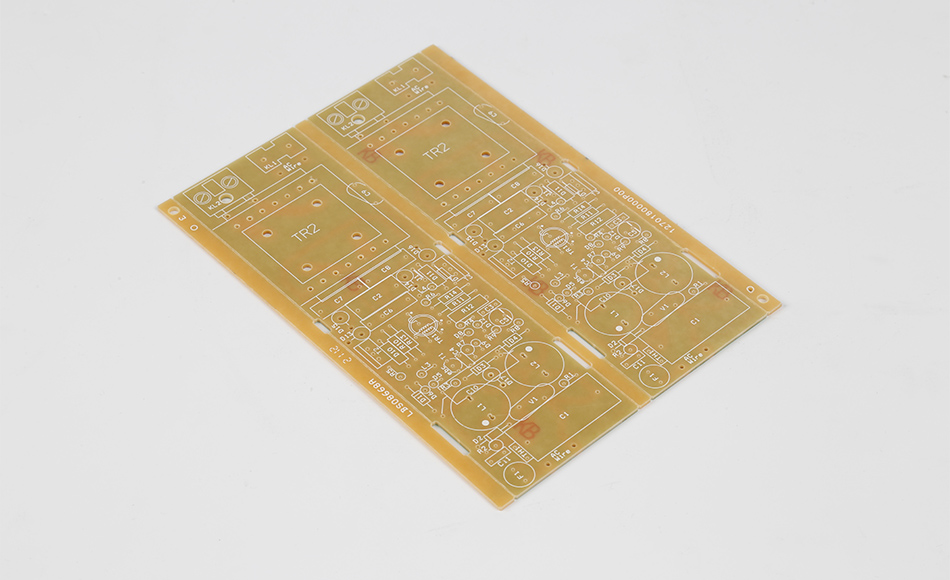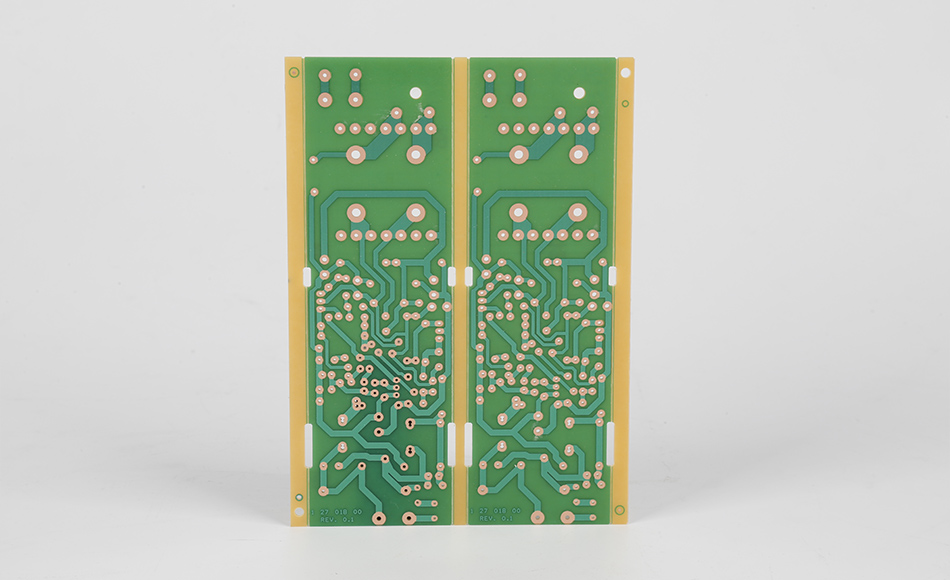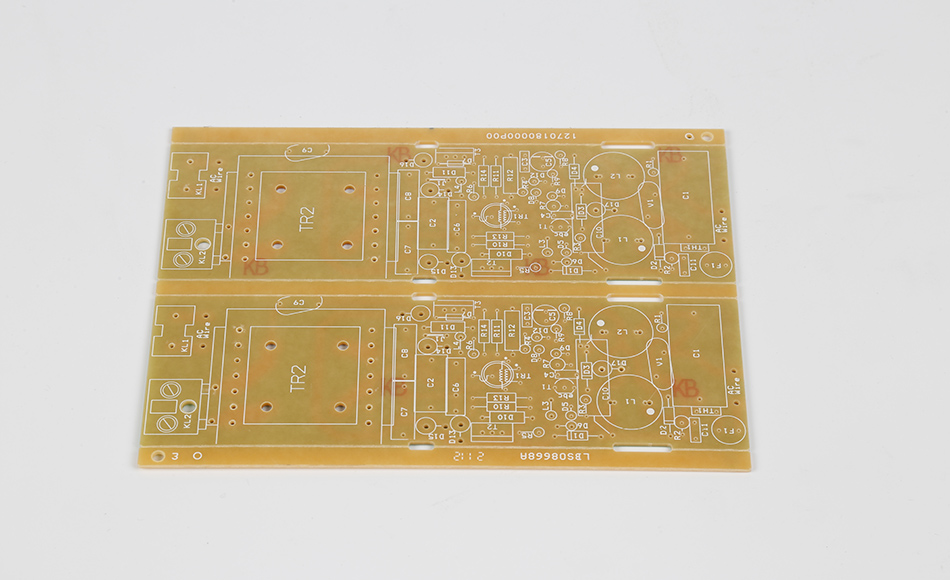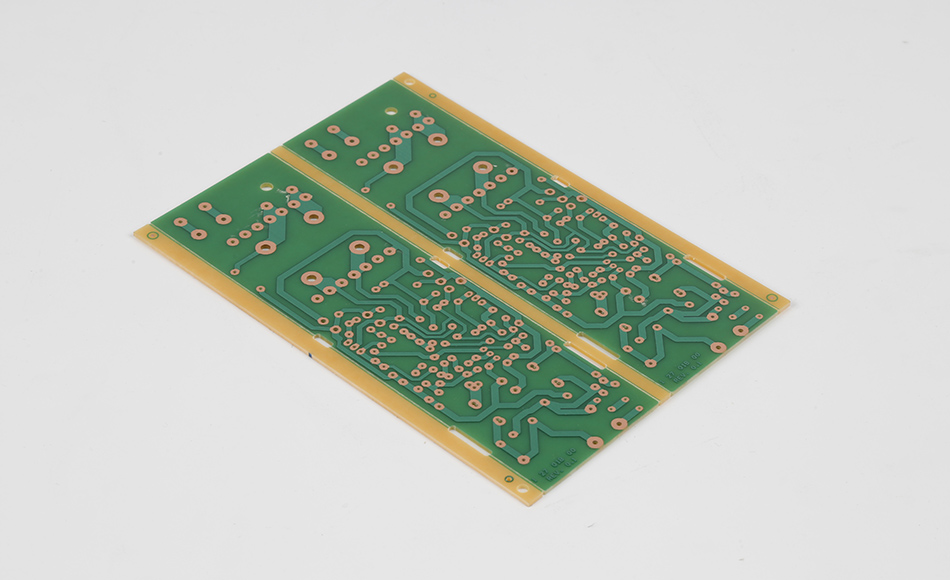-
- PCB TYPE
- PRINTED CIRCUIT BOARD PROTOTYPE ALUMINUM PRINTED CIRCUIT BOARD R&F PCB FPC HIGH FREQUENCY PCB HIGH-TG PCB HEAVY COPPER PCB HDI PCB PCB FOR LIGHTING METAL CORE PCB
time:Aug 21. 2025, 12:05:20
High Thermal Conductivity CEM-3 represents a paradigm shift in the design of composite epoxy substrates, prioritizing efficient heat transfer as a core attribute rather than a secondary consideration. Unlike standard CEM-3, which balances cost and basic performance, high thermal conductivity variants are engineered from the ground up to facilitate rapid thermal diffusion, addressing the critical need for heat management in power-dense electronics. This advancement is particularly significant in an era where devices are shrinking while packing more functionality—from compact industrial sensors to next-gen consumer gadgets—creating localized heat buildup that can degrade performance or shorten lifespans. By focusing on the intrinsic mechanisms of thermal conductivity, high thermal conductivity CEM-3 bridges the gap between budget substrates and specialized thermal materials, offering a practical solution for applications where heat dissipation is non-negotiable but premium costs are unjustified. This article explores the scientific principles behind its enhanced thermal properties, innovative material formulations, real-world implementation strategies, and future potential, highlighting how it elevates thermal management in mid-tier electronics.
Thermal conductivity—the ability of a material to transfer heat—is governed by three primary mechanisms in solids: phonon conduction (vibrations in the atomic lattice), electron conduction (movement of free electrons), and radiation (heat transfer via electromagnetic waves). In insulating materials like CEM-3, phonon conduction is the dominant mechanism, making it the focus of efforts to enhance thermal performance.
Standard CEM-3’s thermal conductivity is limited by its composite structure: the epoxy resin matrix, which is a poor thermal conductor, surrounds glass fibers that conduct heat moderately well. The interface between these two materials creates thermal resistance, as phonons struggle to transfer from the resin to the fibers. Additionally, the random orientation of fibers and air pockets within the resin further impede heat flow, resulting in conductivity levels that are sufficient for low-power devices but inadequate for heat-generating components.
High thermal conductivity CEM-3 addresses these limitations by optimizing each element of the composite structure to facilitate phonon movement. This involves engineering the resin matrix to reduce phonon scattering, selecting fibers that enhance heat transfer, and minimizing interface resistance—all while preserving the material’s electrical insulation, mechanical strength, and cost-effectiveness. The result is a substrate where heat flows freely across the entire structure, preventing hot spots and ensuring uniform temperature distribution.

The enhanced thermal performance of high thermal conductivity CEM-3 stems from targeted innovations in material composition and structure, each designed to maximize phonon conduction:
At the heart of high thermal conductivity CEM-3 is the strategic integration of thermally conductive fillers that form continuous pathways for phonon transfer. Unlike traditional fillers, which are often added in small quantities for minor improvements, these fillers are selected based on their phonon mean free path—the distance phonons travel before scattering—and their compatibility with the epoxy matrix.
Boron Nitride (BN) Nanoplates: BN exhibits high thermal conductivity (up to 400 W/mK) and excellent electrical insulation, making it ideal for CEM-3. Its plate-like structure allows for overlapping arrangements, creating a “thermal network” through the resin. When dispersed uniformly, BN nanoplates reduce phonon scattering by providing a low-resistance path for heat flow.
Aluminum Nitride (AlN) Particles: AlN offers high thermal conductivity (180–200 W/mK) and chemical stability, making it suitable for high-temperature applications. Its spherical shape complements BN’s plates, filling gaps in the thermal network and ensuring even heat distribution.
Hybrid Filler Systems: Combining BN nanoplates with AlN particles creates a synergistic effect, leveraging the strengths of each to achieve higher overall conductivity than either filler alone. This hybrid approach also reduces the total filler load required, preserving the resin’s flow properties during manufacturing.
The epoxy resin in high thermal conductivity CEM-3 is modified to reduce phonon scattering, a key barrier to heat transfer in polymers. This involves:
Increasing Cross-Link Density: A more highly cross-linked resin structure creates a more ordered atomic lattice, allowing phonons to travel longer distances without colliding with defects. This is achieved by adjusting the ratio of epoxy monomers to hardeners, optimizing the curing process to form stronger chemical bonds.
Reducing Impurities and Void Formation: Strict quality control during resin synthesis minimizes impurities (e.g., unreacted monomers) and air bubbles, which act as phonon scatterers. Vacuum degassing and precision mixing ensure a homogeneous matrix with minimal defects.
Functionalizing Resin Molecules: Adding silane-based functional groups to the resin enhances its compatibility with thermally conductive fillers, improving adhesion and reducing interface resistance. This allows phonons to transfer seamlessly from the filler to the resin, boosting overall conductivity.
The glass fibers in high thermal conductivity CEM-3 are selected for their thermal properties rather than just mechanical strength. High-purity E-glass fibers, which have lower impurity levels than standard glass fibers, exhibit higher thermal conductivity and reduce phonon scattering at the fiber-resin interface. Additionally, fibers are oriented to align with the primary heat flow direction in the final PCB, maximizing their contribution to thermal transfer. This orientation is achieved through careful control of the fiber layup during lamination, ensuring fibers run parallel to high-heat components like power transistors or LEDs.

High thermal conductivity CEM-3 delivers tangible advantages that directly impact device performance, reliability, and design flexibility:
The primary benefit is its ability to spread heat rapidly across the substrate, reducing peak temperatures in hot spots by 15–25°C compared to standard CEM-3. This is critical for components like MOSFETs or voltage regulators, where even small temperature increases can reduce efficiency or trigger thermal shutdown. In a 50W LED driver, for example, high thermal conductivity CEM-3 reduces the junction temperature of the LED chip by 18°C, extending its lifespan by 30–40%.
By dissipating heat more effectively, high thermal conductivity CEM-3 allows devices to operate at higher power levels without exceeding safe temperature limits. This enables engineers to design more compact products by reducing the size of heat sinks or eliminating them entirely. In a smart home hub with multiple wireless modules, this translates to a 20% reduction in device thickness while supporting faster data processing and longer operating times.
Thermal cycling—repeated heating and cooling—causes stress in PCBs as different materials expand and contract at varying rates. High thermal conductivity CEM-3’s uniform heat distribution minimizes temperature gradients, reducing this stress and lowering the risk of solder joint fatigue or PCB warping. In automotive electronics, which experience extreme temperature swings, this improves long-term reliability, reducing warranty claims by up to 25%.
Unlike some thermal substrates that compromise electrical performance, high thermal conductivity CEM-3 maintains stable dielectric properties (e.g., low dissipation factor) at frequencies up to 2 GHz. This makes it suitable for high-frequency devices like 5G small cells or Wi-Fi 6 routers, where both thermal management and signal integrity are critical. Its low dielectric constant also reduces signal loss, ensuring reliable data transmission in high-speed communication systems.

Producing high thermal conductivity CEM-3 requires precision but remains compatible with standard PCB manufacturing workflows, minimizing adoption barriers:
Achieving consistent thermal conductivity requires uniform dispersion of thermally conductive fillers in the epoxy resin. Manufacturers use high-energy ball milling or ultrasonic dispersion to break up filler agglomerates, ensuring each particle is evenly surrounded by resin. In-line rheometers monitor the resin’s viscosity during mixing, adjusting parameters in real time to prevent uneven distribution. This precision is critical: even small clusters of fillers can create localized variations in conductivity, leading to hot spots in the final PCB.
The addition of thermally conductive fillers increases the resin’s viscosity, requiring adjustments to the lamination process:
Elevated Lamination Temperatures: Heating the resin to 160–170°C (slightly higher than standard CEM-3) reduces viscosity, ensuring full impregnation of glass fibers.
Extended Dwell Times: Longer lamination cycles allow the resin to flow into fiber bundles, eliminating air pockets that would reduce thermal conductivity.
Controlled Pressure Application: Gradual pressure increase (from 10 to 30 psi) prevents filler displacement, ensuring uniform distribution throughout the substrate.
Traditional PCB quality checks (e.g., dielectric strength, flexural testing) are augmented with thermal conductivity verification using techniques like:
Transient Plane Source (TPS) Method: This non-destructive test measures thermal conductivity by applying a brief heat pulse to the material and monitoring temperature response, providing precise data at multiple points across the substrate.
Thermal Imaging Under Load: Infrared cameras capture heat distribution when the PCB is subjected to simulated operating conditions, identifying any localized conductivity issues that could compromise performance.
High thermal conductivity CEM-3 is fully compatible with standard PCB assembly techniques, including drilling, etching, and surface mounting. It withstands reflow soldering temperatures (up to 260°C) without degradation, ensuring reliable solder joint formation. This compatibility allows manufacturers to integrate it into existing production lines without retooling, reducing adoption costs and time to market.

High thermal conductivity CEM-3 is transforming thermal management in diverse applications where heat dissipation is critical but cost and manufacturability cannot be compromised:
Motor Drives: Inverters for small AC motors (0.5–5 HP) generate significant heat during operation. High thermal conductivity CEM-3 dissipates this heat, ensuring stable motor performance and reducing the risk of overheating-related failures.
Power Supplies: Industrial power supplies (30–100W) use high thermal conductivity CEM-3 to manage heat from transformers and rectifiers, enabling compact designs that fit in tight enclosures.
Gaming Consoles: High-performance gaming consoles with powerful GPUs generate substantial heat. High thermal conductivity CEM-3 in the main PCB spreads heat away from the GPU, preventing thermal throttling and maintaining consistent frame rates.
Fast-Charging Devices: 65W+ smartphone chargers use high thermal conductivity CEM-3 to handle the heat generated during rapid charging, ensuring safe operation and reducing charger size.
Micro-Inverters: Solar micro-inverters convert DC power from panels to AC, generating heat in the conversion process. High thermal conductivity CEM-3 dissipates this heat, improving efficiency and extending inverter lifespan in outdoor installations.
Wind Turbine Sensors: Sensors monitoring wind turbine performance operate in harsh environments with wide temperature swings. High thermal conductivity CEM-3 ensures reliable operation by preventing heat buildup in sensitive electronics.
Portable Ultrasound Machines: These devices combine high-power transmitters with sensitive receivers, creating heat management challenges. High thermal conductivity CEM-3 keeps components cool, ensuring image quality and device reliability during extended use.
Laser Therapy Devices: Medical lasers generate heat in their control electronics. High thermal conductivity CEM-3 prevents overheating, maintaining precise laser output and patient safety.

High thermal conductivity CEM-3 occupies a unique niche, offering a balance of performance, cost, and practicality that distinguishes it from alternatives:
Standard CEM-3 is sufficient for low-power devices but fails in applications with significant heat generation. High thermal conductivity CEM-3 provides 2–3x higher thermal conductivity, making it suitable for 30–100W devices while retaining CEM-3’s cost advantage over premium materials.
High-thermal FR4 variants offer comparable conductivity but at a 40–60% higher cost. For mid-range applications like 50W LED drivers, high thermal conductivity CEM-3 delivers equivalent thermal performance at a lower price, making it more attractive for mass production.
MCPCBs excel in very high-power applications (100W+) but are heavier, more expensive, and harder to machine. High thermal conductivity CEM-3 is a cost-effective alternative for 30–100W devices, providing sufficient cooling without the added weight or manufacturing complexity.
Ceramic substrates (e.g., aluminum oxide) offer superior thermal conductivity but are brittle, expensive, and incompatible with standard PCB processes. They are reserved for specialized applications like power electronics, while high thermal conductivity CEM-3 serves mainstream devices requiring reliable thermal management.
Ongoing research and development are pushing the boundaries of high thermal conductivity CEM-3, with several promising trends emerging:
Advances in nanotechnology are enabling the use of carbon nanotubes (CNTs) and graphene nanoplatelets as fillers, which exhibit extremely high thermal conductivity (up to 5,000 W/mK for graphene). These nanostructured fillers create more efficient thermal pathways, potentially doubling the conductivity of current high thermal CEM-3 variants. Challenges include achieving uniform dispersion and reducing costs, but early prototypes show promising results.
Manufacturers are exploring bio-based epoxy resins and recycled fillers to reduce the environmental impact of high thermal conductivity CEM-3. Epoxy resins derived from plant oils (e.g., soybean or castor oil) offer comparable thermal properties to petroleum-based resins, while recycled glass fibers and industrial byproducts (e.g., fly ash) can replace synthetic fillers. These sustainable alternatives lower carbon footprints without sacrificing performance.
Future high thermal conductivity CEM-3 substrates may include embedded heat pipes or thermal vias, creating hybrid structures that combine the substrate’s inherent conductivity with active cooling mechanisms. This would allow for targeted heat dissipation in high-power areas, further enhancing performance in compact devices.
Incorporating thermochromic materials or embedded sensors into high thermal conductivity CEM-3 could enable real-time temperature monitoring, providing feedback to device controllers to optimize performance and prevent overheating. This integration would add minimal cost while significantly improving reliability in critical applications.
High Thermal Conductivity CEM-3 represents a critical advancement in thermal management for mid-tier electronics, proving that efficient heat transfer can be achieved without sacrificing cost or manufacturability. By focusing on the scientific principles of phonon conduction and leveraging innovative materials—from hybrid fillers to engineered resins—it delivers superior thermal performance that directly impacts device reliability, efficiency, and design flexibility. Its compatibility with standard manufacturing processes and broad application range make it a practical solution for industries ranging from consumer electronics to renewable energy.
As devices continue to evolve—becoming smaller, more powerful, and more integrated—high thermal conductivity CEM-3 will play an increasingly vital role in ensuring they operate reliably. For engineers and manufacturers, it offers a strategic advantage: a substrate that meets the thermal demands of modern electronics while remaining accessible and cost-effective. In a market where performance and sustainability are equally important, high thermal conductivity CEM-3 stands out as a solution that addresses both, paving the way for the next generation of efficient, reliable devices.

Got project ready to assembly? Contact us: info@apollopcb.com



We're not around but we still want to hear from you! Leave us a note:

Leave Message to APOLLOPCB
